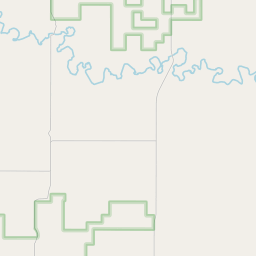Hugh Glass
Historical marker location:
Shadehill, South Dakota
( Marker is on Ketterlings Loop Road, 0.7 miles North Cabin Road, on the right.)
Marker installed: 2018







© OpenStreetMap contributors
Loading...
Searching for other points of interest within 3 miles of this location.The Badlands National Park, located in southwestern South Dakota, is home to one of the world's richest fossil beds, containing the remains of ancient horses, rhinoceroses, and other prehistoric animals.
About Perkins County
Perkins County Timeline
Perkins County, South Dakota has a rich history that dates back to its early Native American inhabitants. Prior to the arrival of European settlers, the region was inhabited by various tribes, including the Sioux, Cheyenne, and Arapaho. These Native American communities relied on the land for hunting, gathering, and spiritual ceremonies.
The area now known as Perkins County was officially established in 1908. It was named after Henry E. Perkins, a prominent politician and the first Governor of South Dakota. The county's establishment was an important step in the early development of the state, as it was one of several counties created during this time.
Early settlers in Perkins County primarily engaged in agriculture, with farming and ranching becoming the predominant economic activities. The fertile land and the availability of water sources, such as the Moreau River, attracted many settlers looking to establish homesteads and build prosperous lives for their families.
Throughout its history, Perkins County has faced the challenges of droughts, economic changes, and social transformations. However, the strong sense of community and resilience has always been significant in the county's growth and development. Today, Perkins County remains an agricultural hub, with a diverse economy that includes farming, livestock production, and small businesses.
Overall, the history of Perkins County reflects the endurance and adaptability of its residents, as well as their commitment to preserving the area's natural resources and heritage for future generations.
The area now known as Perkins County was officially established in 1908. It was named after Henry E. Perkins, a prominent politician and the first Governor of South Dakota. The county's establishment was an important step in the early development of the state, as it was one of several counties created during this time.
Early settlers in Perkins County primarily engaged in agriculture, with farming and ranching becoming the predominant economic activities. The fertile land and the availability of water sources, such as the Moreau River, attracted many settlers looking to establish homesteads and build prosperous lives for their families.
Throughout its history, Perkins County has faced the challenges of droughts, economic changes, and social transformations. However, the strong sense of community and resilience has always been significant in the county's growth and development. Today, Perkins County remains an agricultural hub, with a diverse economy that includes farming, livestock production, and small businesses.
Overall, the history of Perkins County reflects the endurance and adaptability of its residents, as well as their commitment to preserving the area's natural resources and heritage for future generations.
Perkins County Timeline
This timeline provides a condensed summary of the historical journey of Perkins County, South Dakota.
- 1908 - Perkins County is established on January 8 as one of the original 66 counties in South Dakota.
- 1910 - The first census is conducted in Perkins County, revealing a population of 2,646 residents.
- 1920 - The county's population reaches its peak at 10,899 residents.
- 1929 - The Great Depression begins, causing significant economic hardship in Perkins County.
- 1941 - The United States enters World War II after the attack on Pearl Harbor. Many residents from Perkins County enlist in the armed forces.
- 1953 - The construction of Shadehill Dam begins, providing a reliable water source for irrigation and recreational opportunities.
- 1973 - Perkins County experiences a severe blizzard, known as the "Storm of the Century," resulting in several days of power outages and widespread destruction.
- 1990 - The county's population declines to 3,044 residents.
- 2001 - A tornado touches down in Perkins County, causing significant damage to homes and infrastructure.
- 2010 - The population of Perkins County decreases to 2,982 residents according to the national census.
- 2019 - Major agricultural reforms are introduced in Perkins County to address challenges faced by farmers.